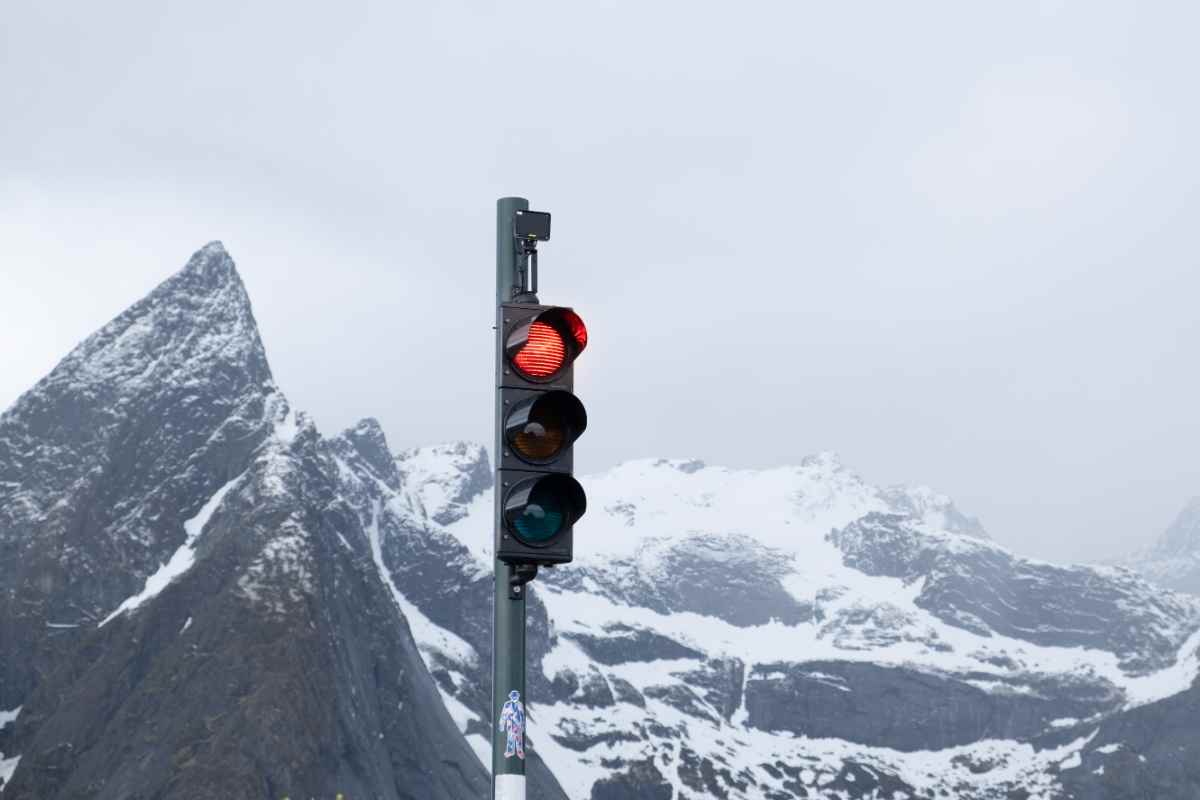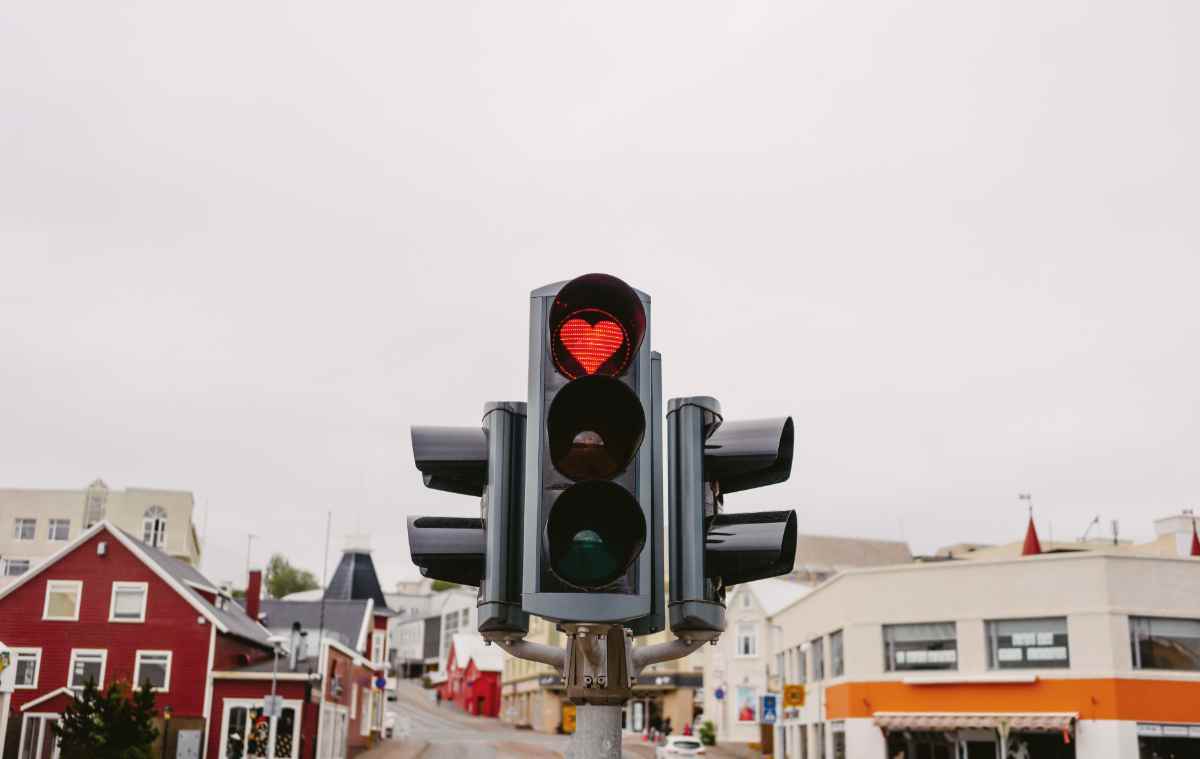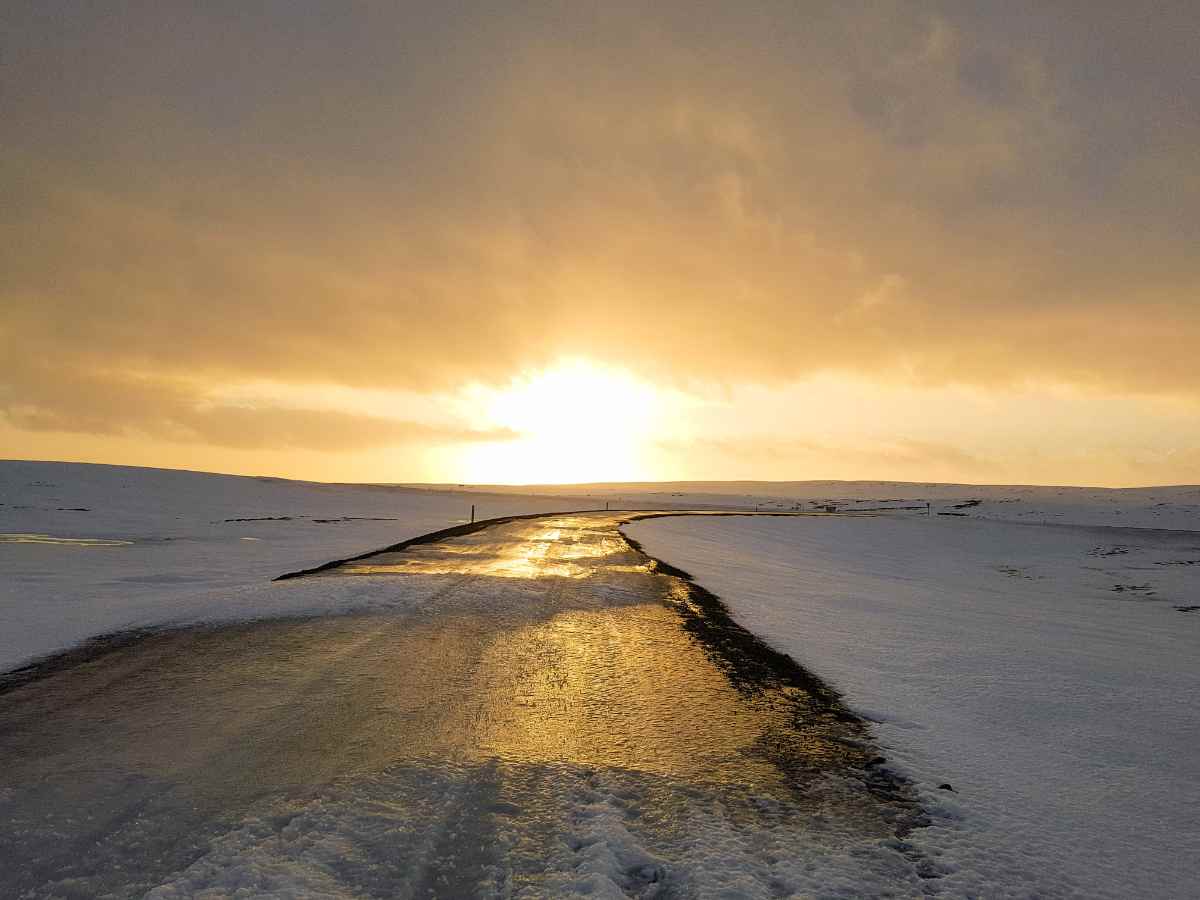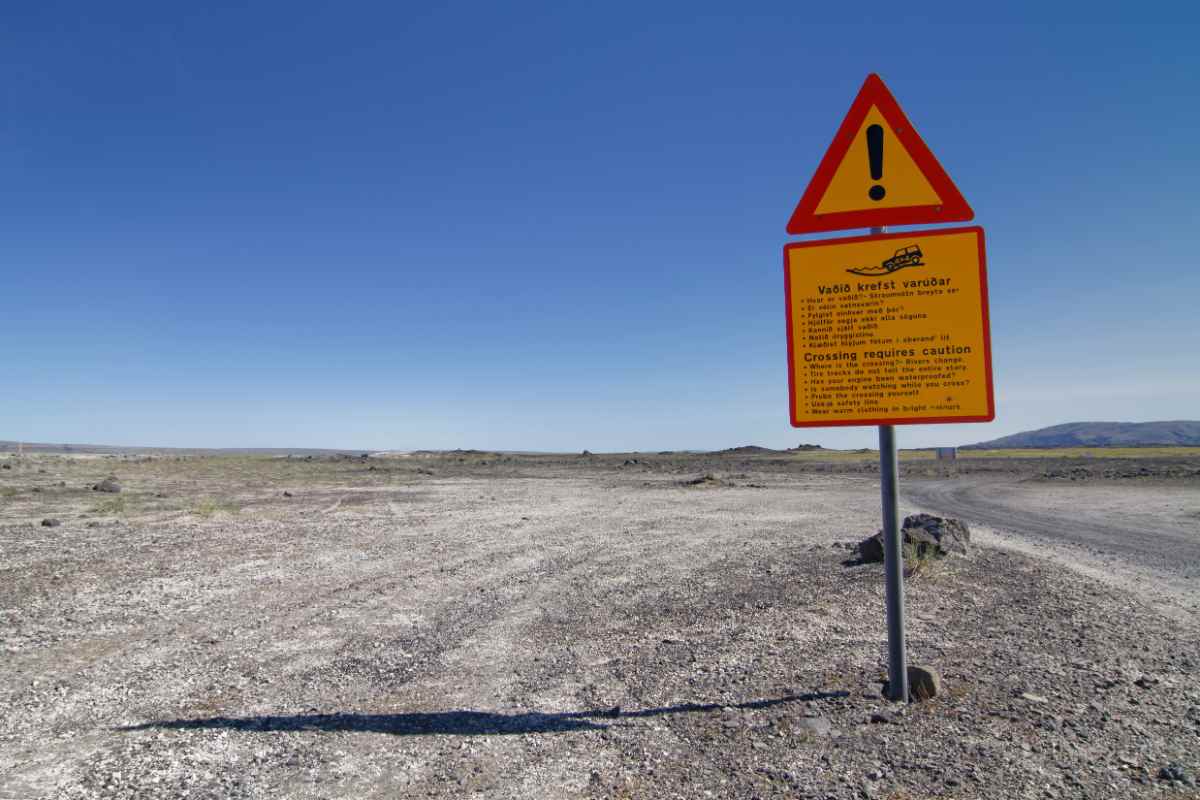If you will drive on your trip, knowing how the Iceland traffic lights work is essential. It may seem that everything is standard, but the driving rules may vary compared to other countries. Let's check it out.
If you have driven in more than one country, you know that there is no universal standard of traffic laws and driving etiquette. If you are planning to rent a car in Reykjavík, it’s a good idea to make yourself aware of the local customs to be adhered to behind the wheel. Here are a few fun facts and important pieces of information on traffic lights in Iceland.
Traffic lights were installed in Iceland for the first time in 1949, as the traffic was gradually increasing. The lights were initially placed on the four main intersections of downtown Reykjavík. Things have completely changed now, haven't they?
Icelandic Rules for Traffic Lights
Learn the rules, sequence, and meaning of the Icelandic traffic lights:
- Red light: It means you must stop and wait for the green light to come.
- Red and yellow light at a time: Get ready! The green light is about to flash.
- Green light: You can go ahead.
- Yellow light: The light is about to change to red, and the vehicle must be stopped. In case you are already over the stoplight, you can go ahead if it is safe to do so. This is an exception and not a rule!
Can you turn right on a red light in Iceland?
No, you cannot. It's illegal to turn right at a red light unless a sign or signal specifically authorizes it, which is not common in Iceland at all.

Accessible traffic lights in Reykjavík
This system helps blind people when crossing a street. These traffic lights have three types of acoustic signals that vary in frequency and duration. First, it has an orientating tone, this way the user can come closer to the pedestrian crossing. A slow, tweeting sound will then start and that means the user can cross the street. It will eventually get faster, letting the user know the traffic light is about to change to green.
These tones allow the user to clearly and unequivocally receive information on the state of the signal crossing. This way it is not mixed with traffic noise.
Heart-Shaped Traffic Lights Iceland
The great thing about Icelanders is that even when they ask you to stop, they want to be nice about it. One town in northern Iceland, Akureyri, has taken this to the next level. They have changed all of the stop signs on their traffic lights into heart shapes. These were installed after the 2008 financial meltdown, which hit Iceland fairly hard. They were seen as a way to boost morale; one thing is for sure, they make you smile when you see them.
Unfortunately, Reykjavík still has the regular circle red lights, so this heartfelt gesture will spread to the rest of Iceland at some point. Other than that, traffic lights here look just like what you’re used to: red, orange, and green, with the accompanying messages to stop, be ready, and go.

More Helpful Resources Regarding the Rules of the Road When Driving in Iceland
Now that you know everything there is to know about traffic lights in Iceland, make sure not to miss the following related articles:
- All About Tunnels in Iceland
- Speed Limits in Iceland and Other Restrictions
- Iceland Road Signs & Particularities
- Your Road Map to the Driving Rules in Iceland
- Driver’s License Requirements for Iceland Rentals
A Few Things to Keep an Eye on When Driving in Iceland
You might know exactly how the traffic lights work. But there are a few external factors here that can sometimes throw a spanner in the works of the most experienced driver. Be mindful and keep a lookout for the following when driving in Iceland:
The Iceland Weather & Road Conditions
There are many driving hazards in Iceland to be aware of, the most obvious of which is the weather. Iceland’s weather is unpredictable and can be extreme; in the winter, spring, and autumn, it’s not uncommon to hear about a snowstorm or sandstorm. Heavy rain or snowfall combined with cold temperatures can make roads very icy.

And Iceland’s occasionally strong wind can drastically reduce visibility. Roads will be closed if they are deemed unsafe to drive on. You can check forecasts on the Icelandic Meteorological Office’s website, and check for road closures.
When you collect your car, ensure that it is fitted with winter tires and always have a de-icer handy. Even in the summer, when temperatures climb slightly higher, the weather can still change quickly. It’s best to always be prepared for the worst, with warm, waterproof clothing.
Once you leave the capital, gas stations will be few and far between. It’s a good idea to fill up whenever you are at or below half a tank and are near a petrol station; the next one might be far away. And it’s essential to have a full tank before driving up to the highlands. These are in the interior of Iceland and are only accessible via F roads.
The Rough & Tough F-Roads
F roads are gravel roads that are not well maintained, so only 4x4 vehicles are permitted to drive on them. They are also only open between June and September, but even this limited opening time depends on weather conditions.
If you are planning to visit the wild interior of the country, we recommend you book your 4x4 rental in advance. The best rental options, like the Toyota Land Cruiser, the Subaru Forester or the Land Rover Defender often gets sold out during high season.
Many of the F roads involve river crossings, so after a winter and spring of heavy rain and/or snowfall, some of the rivers may be uncrossable. Even in summer, be very careful. And try to avoid crossing rivers, as your rental insurance probably won't cover any damages caused by this behavior.

Unexpected Road Hazards
On your Icelandic road trip, you will most likely run into some sheep. There are approximately 800,000 on the island; that’s more than two per human inhabitant.
Occasionally, some sheep may wander into the road. If you do come across some blocking your way, approach slowly and watch out for darting individuals. You might also have Icelandic horses, reindeer, or other wildlife crossing the road, especially when you enter the more remote regions. So drive cautiously and be vigilant.
Iceland Traffic Lights: There for Your & Others’ Safety
The traffic lights and road rules of the island are there to keep you and others safe. Icelanders also take these rules very seriously. The repercussions for not adhering to these rules have more than just a little sting to them.
You might get so heavily fined that you need to cut your trip short and go remortgage the house. So, when you rent your car in Reykjavík, be sure that you always stick to the right side of the law… and the right side of the road.


 By
By


